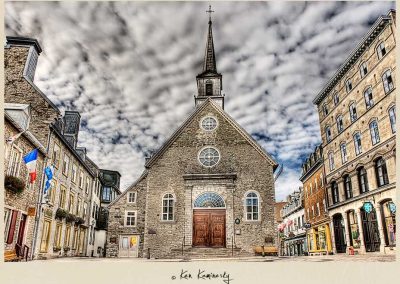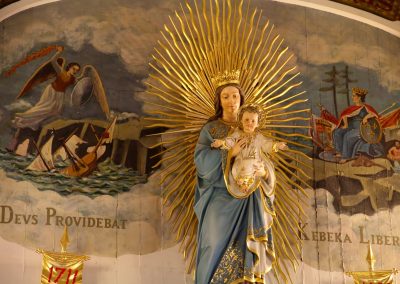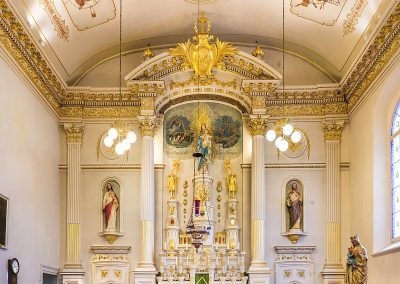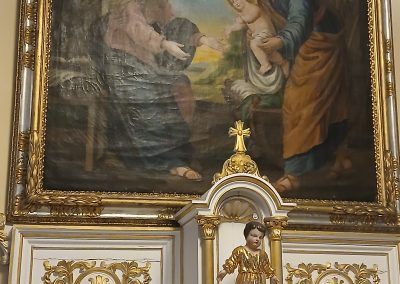L’intervention de Notre-Dame de la Victoire
Une église construite au 17e siècle:
Dans la basse ville du Vieux-Québec se trouve une des plus anciennes églises du Canada et qui se nomme Notre-Dame-des-Victoires. Sa construction a commencé en 1688 et a été terminée en 1723. À l’origine cette église fut consacrée à l’Enfant-Jésus; mais, en 1690 elle reçut le nom de Notre-Dame-de-la-Victoire à la suite de la retraite de l’amiral anglais William Phips.
Guerre entre la France et l’Angleterre:
Tout a commencé lorsque, en 1690, une flotte anglaise et protestante tenta de s’emparer de Québec, menaçant à nouveau la principale ville de la Nouvelle-France. C’est le 16 octobre au matin, que la flotte de navires commandée par William Phips mouilla l’ancre en face de Québec. L’amiral Phips détacha immédiatement un officier pour sommer la place de se rendre. Le gouverneur Frontenac, piqué du manque de convenance dans les termes de la sommation, lui dit : « Allez, je vais répondre à votre maître par la bouche de mes canons ; qu’il apprenne que ce n’est pas de la sorte qu’on fait sommer un homme comme moi. » Malgré la confiance affirmée par le gouverneur, les moyens de défense de la ville sont faibles. L’inquiétude est palpable chez les habitants qui prient la Vierge Marie de leur venir en aide afin de repousser la menace anglaise.
Exposition d’un tableau de la Sainte Famille:
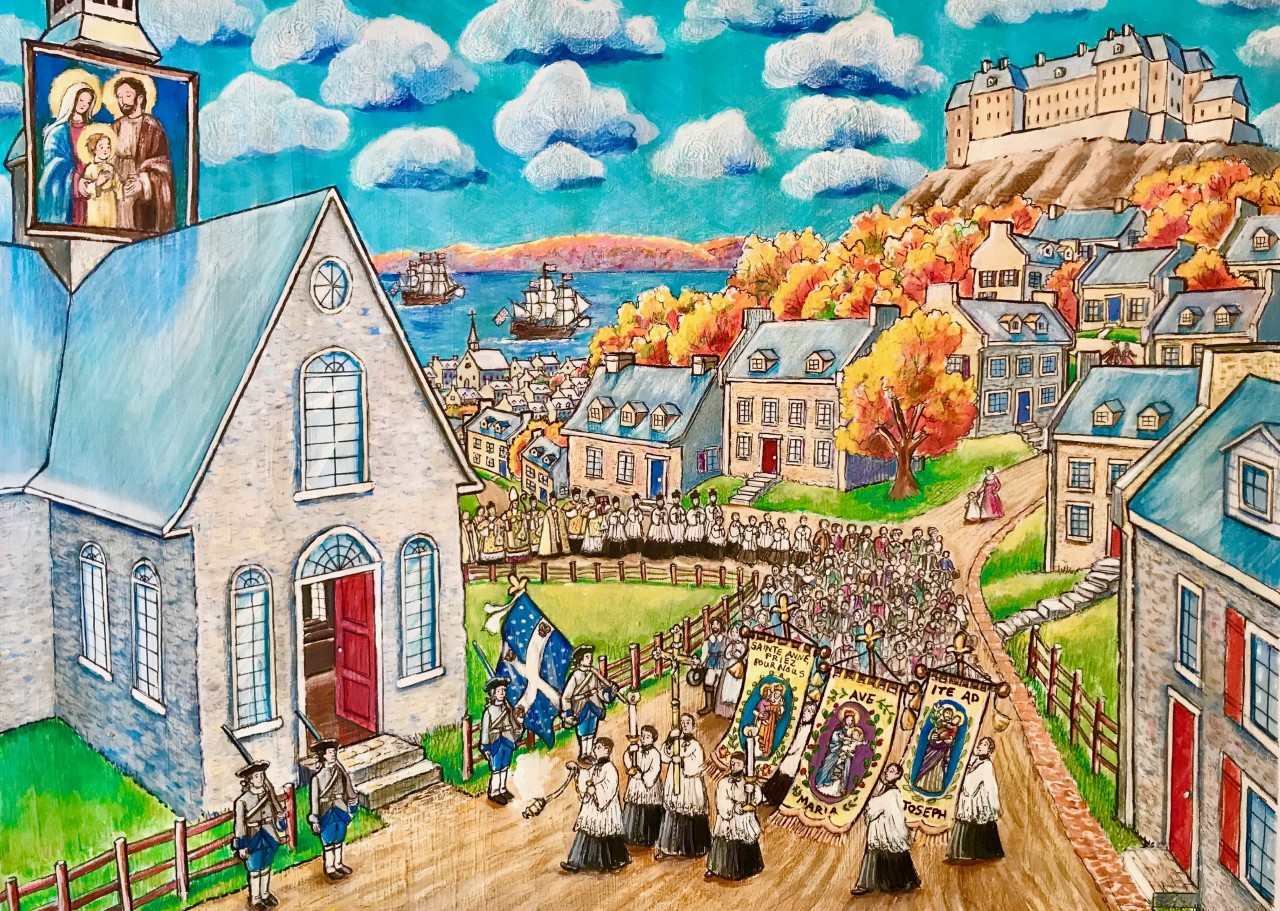
C’est à partir de cette année du triomphe des armes français contre les Anglais et les Autochtones coalisés, que l’on a célébré chaque année dans la colonie, le quatrième dimanche d’octobre, la fête de Notre Dame de la Victoire dans le modeste sanctuaire de la basse ville.
Sources :
- Narcisse-Eutrope Dionne, Historique de l’église de Notre-Dame des Victoires, basse-ville de Québec. Québec. 1888. Pp. 13-23.
- et du site web http://www.tradition-quebec.ca/2018/08/kebeka-liberata-notre-dame-protege-la.html

